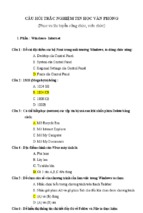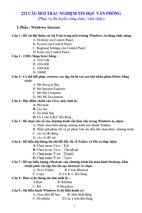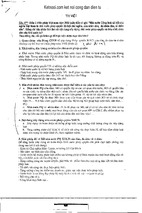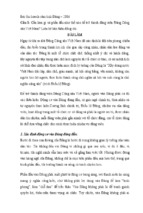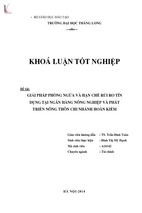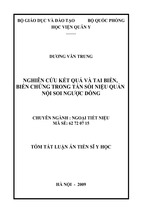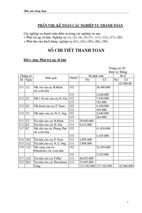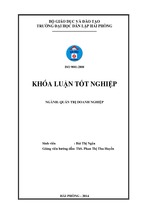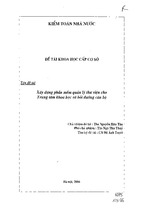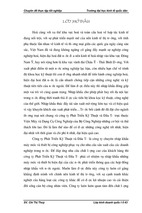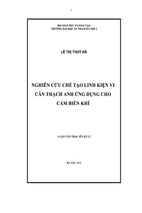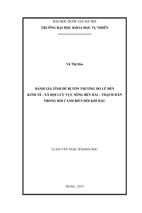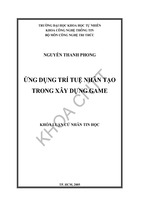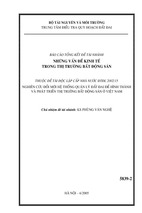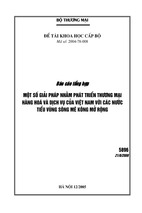English has an interesting variety of noun phrases, which differ greatly in
structure. Examples are ‘binominal’ (two-noun) phrases (‘a beast of a
party’); possessive constructions (‘the author’s opinion’); and discontinuous
noun phrases (‘the review [came out yesterday] of his book’).
How are these different noun phrases structured? How do we produce and
understand them? These questions are central to this original study, which
explores the interaction between the form of noun phrases, their meaning
and their use. It shows how, despite the need in linguistic analysis for strict
categories, many linguistic constructions in fact defy straightforward
classification – and concludes that in order to fully explain the internal
structure of utterances, we must first consider the communicative, pragmatic
and cognitive factors that come into play. Drawing on a range of
authentic examples, this book sheds new light not only on the noun phrase
itself but also on the nature of linguistic classification.
The English Noun Phrase
English has an interesting variety of noun phrases, which differ greatly in
structure. Examples are ‘binominal’ (two-noun) phrases (‘a beast of a
party’); possessive constructions (‘the author’s opinion’); and discontinuous noun phrases (‘the review [came out yesterday] of his book’).
How are these different noun phrases structured? How do we produce and
understand them? These questions are central to this original study, which
explores the interaction between the form of noun phrases, their meaning
and their use. It shows how, despite the need in linguistic analysis for strict
categories, many linguistic constructions in fact defy straightforward
classification – and concludes that in order to fully explain the internal
structure of utterances, we must first consider the communicative, pragmatic and cognitive factors that come into play. Drawing on a range of
authentic examples, this book sheds new light not only on the noun phrase
itself but also on the nature of linguistic classification.
evelien keizer is Senior Researcher at the Amsterdam Center for
Language and Communication at the University of Amsterdam. She is
co-editor of Fuzzy grammar: a reader (2004).
Studies in English Language
General editor
Merja Kytö (Uppsala University)
Editorial Board
Bas Aarts (University College London), John Algeo (University of
Georgia), Susan Fitzmaurice (Northern Arizona University),
Richard Hogg (University of Manchester), Charles F. Meyer
(University of Massachusetts)
The English Noun Phrase
The Nature of Linguistic Categorization
Studies in English Language
The aim of this series is to provide a framework for original studies of English,
both present-day and past. All books are based securely on empirical research,
and represent theoretical and descriptive contributions to our knowledge of
national varieties of English, both written and spoken. The series covers a
broad range of topics and approaches, including syntax, phonology, grammar,
vocabulary, discourse, pragmatics and sociolinguistics, and is aimed at an
international readership.
Already published in this series:
Christian Mair
Infinitival complement clauses in English: a study of syntax in discourse
Charles F. Meyer
Apposition in contemporary English
Jan Firbas
Functional sentence perspective in written and spoken communication
Izchak M. Schlesinger
Cognitive space and linguistic case
Katie Wales
Personal pronouns in present-day English
Laura Wright
The development of standard English, 1300–1800: theories, description, conflicts
Charles F. Meyer
English Corpus Linguistics: theory and practice
Stephen J. Nagle and Sara L. Sanders (eds.)
English in the Southern United States
Anne Curzan
Gender shifts in the history of English
Kingsley Bolton
Chinese Englishes
Irma Taavitsainen and Päivi Pahta (eds.)
Medical and scientific writing in late medieval English
Elizabeth Gordon, Lyle Campbell, Jennifer Hay, Margaret Maclagan,
Andrea Sudbury and Peter Trudgill
New Zealand English: its origins and evolution
Raymond Hickey (ed.)
Legacies of colonial English
Merja Kytö, Mats Rydén and Erik Smitterberg (eds.)
Nineteenth-century English: stability and change
John Algeo
British or American English? A handbook of word and grammar patterns
Christian Mair
Twentieth-century English: history, variation and standardization
The English Noun Phrase
The Nature of Linguistic
Categorization
evelien keizer
University of Amsterdam
cambridge university press
Cambridge, New York, Melbourne, Madrid, Cape Town, Singapore, São Paulo
Cambridge University Press
The Edinburgh Building, Cambridge cb2 8ru, UK
Published in the United States of America by Cambridge University Press,
New York
www.cambridge.org
Information on this title: www.cambridge.org/9780521849616
ª Evelien Keizer 2007
This publication is in copyright. Subject to statutory exception
and to the provisions of relevant collective licensing agreements,
no reproduction of any part may take place without
the written permission of Cambridge University Press.
First published 2007
Printed in the United Kingdom at the University Press, Cambridge
A catalogue record for this publication is available from the British Library
isbn 978-0-521-84961-6 hardback
Cambridge University Press has no responsibility for the persistence or accuracy
of URLs for external or third-party internet websites referred to in this publication,
and does not guarantee that any content on such websites is, or will remain,
accurate or appropriate.
Contents
Acknowledgements
1
Introduction
page xii
1
PART I: The structural approach: possibilities
and limitations
2 Headedness within the NP
2.1 Introduction
2.2 Internal structure: headedness within the NP
2.2.1 Semantic criteria
2.2.2 (Morpho)syntactic criteria
2.2.3 Discourse factors
2.3 Conclusion
9
9
9
10
12
20
20
3
Close appositions
3.1 Introduction
3.2 Criteria from previous analyses
3.2.1 Introduction
3.2.2 Intonation and form of the elements
3.2.3 Headedness and syntactic omissibility
3.2.4 Reference and semantic omissibility
3.2.5 Order of the elements
3.2.6 Modified definition and preliminary analysis
3.3 Further evidence
3.3.1 Definiteness
3.3.2 Anaphoric relations
3.3.3 Headedness
3.3.4 Summary: underlying representations
3.4 Conclusion
22
22
23
23
25
30
34
37
38
39
39
49
53
58
59
4
Appositions with of
4.1 Introduction
4.2 of-constructions with referring embedded NPs
61
61
62
vii
viii
Contents
4.2.1 NPs with of-modifiers and of-complements
4.2.2 Partitive NPs
4.3 of-constructions with non-referring embedded NPs:
qualifying of-constructions
4.4 of-appositions
4.4.1 The form of of-appositions
4.4.2 Headedness
4.4.3 Underlying representation
4.5 Conclusion
62
65
71
73
73
76
82
82
5
Binominals
5.1 Introduction
5.2 General characterization
5.2.1 Semantic features
5.2.2 Syntactic and formal features
5.3 Headedness
5.3.1 Introduction
5.3.2 Semantic criteria
5.3.3 Syntactic criteria
5.3.4 Pragmatic criteria
5.3.5 Additional evidence
5.4 Conclusion
85
85
85
86
88
93
93
95
96
99
101
106
6
Pseudo-partitive constructions
6.1 Introduction
6.2 General characterization
6.3 Types of pseudo-partitive constructions
6.3.1 Quantifier nouns
6.3.2 Measure nouns
6.3.3 Container nouns
6.3.4 Part nouns
6.3.5 Collection nouns
6.4 Headedness
6.4.1 Existing analyses
6.4.2 Semantic criteria
6.4.3 Syntactic criteria
6.4.4 Pragmatic criteria
6.4.5 Additional properties
6.5 Conclusion
109
109
109
112
112
113
113
115
115
116
116
117
120
132
135
149
7
Sort/kind/type-constructions
7.1 Introduction
7.2 Analysis: preliminary characterization
7.2.1 Type I: the referential SKT-construction
152
152
153
153
Contents
ix
7.3
7.4
7.5
7.6
7.2.2 Type II: the qualifying construction
7.2.3 Type III: constructions of the third kind
Type I: the referential SKT-construction
7.3.1 Semantic characterization
7.3.2 Discourse properties
7.3.3 Syntactic/formal properties
7.3.4 Underlying representation
Type II: the qualifying construction
7.4.1 Semantic characterization
7.4.2 Discourse properties
7.4.3 Syntactic/formal properties
7.4.4 Underlying representation
Type III: constructions of the third kind
7.5.1 The postdeterminer analysis
7.5.2 Problematic cases: the sort/kind/type of + N2Plur
7.5.3 Conventionalized referential constructions
Conclusion
8 Conclusion
153
154
155
155
155
156
161
162
162
163
165
169
169
169
176
181
183
185
PART II: The cognitive-pragmatic approach: some
applications
9 The flexibility of language
9.1 Introduction
9.2 Pragmatics
9.2.1 Information structure
9.2.2 Given and new
9.2.3 Topic: D-topic, S-topic and G-topic
9.2.4 Focus
9.2.5 Conclusion
9.3 Cognition
9.3.1 Introduction
9.3.2 Prototype theory
9.3.3 Activation
9.4 Conclusion
10 Complements and modifiers
10.1 Introduction
10.2 Some existing proposals
10.2.1 Introduction
10.2.2 Relational versus non-relational nouns
10.2.3 Complements versus modifiers
10.2.4 Conclusion
189
189
190
190
191
194
199
201
202
202
203
206
216
218
218
219
219
221
230
244
x
Contents
11
12
10.3 A cognitive approach to noun frames
10.3.1 Introduction
10.3.2 The ‘conceptual perspective’
10.3.3 The network approach
10.3.4 Prototype effects
10.3.5 Some examples
10.3.6 Relational nouns and definiteness revisited
10.4 Conclusion
245
245
246
250
252
256
261
262
Discontinuous NPs
11.1 Introduction
11.2 Theoretical background
11.2.1 Syntax and semantics: restrictions on
extraposition
11.2.2 Processing and pragmatics: principles and
preferences
11.2.3 Multifunctional theories of word order:
interacting principles
11.2.4 The multifactor hypothesis
11.3 Some existing accounts of extraposition
11.3.1 Presentation versus predication:
Guéron (1980)
11.3.2 Complexity: Hawkins (1994)
11.4 A multifunctional approach: examples from
the corpus
11.4.1 Introduction
11.4.2 Displacement from NP into clause-final
position
11.4.3 Displacement within NP:
complement-modifier switch
11.5 Conclusion
264
264
265
Possessive constructions: the author’s opinion versus the
opinion of the author
12.1 Introduction
12.2 Traditional accounts: interacting principles
12.2.1 Some absolute constraints
12.2.2 Preferences and tendencies
12.2.3 Conclusion
12.3 Theoretical and experimental approaches:
the single-factor approach versus the multifactor
approach
12.3.1 The single-factor approach
12.3.2 Interactive principles: Rosenbach (2002)
265
267
269
271
274
274
277
282
282
283
303
304
307
307
308
308
309
314
314
314
327
Contents
13
xi
12.4 The present study
12.4.1 The difference between prenominal
and postnominal possessives
12.4.2 Prenominal possessives
12.4.3 Postnominal of-constructions
12.5 Conclusion
329
332
333
341
353
Conclusions
355
Bibliography
Author index
Subject index
357
373
376
Acknowledgements
Most of the research for this study was performed as part of the research project
‘‘The English noun phrase: an empirical study’’, funded by the AHRB
(Ref. B/RG/AN5308/APN10614) and carried out at the Survey of English
Usage, University College London, from 2001 to 2003.
My thanks go, first of all, to the supervisor of this project, Bas Aarts, for
giving me the chance to work on it, for allowing me to do it my own way, and for
his friendship and support during two extremely pleasant and inspiring years.
I’m also indebted to him for many valuable comments on earlier drafts of this
book. Further I would like to thank the other colleagues and friends from the
Survey, all of whom have been tremendously helpful, both academically and
otherwise: Sean Wallis, Gabriel Ozón, Mariangela Spinillo, Yordanka Kavalova,
Isaac Hallegua, René Quinault† and Marie Gibney. I owe a special debt to Sean
for the many discussions we had – often of a linguistic, but usually of a political,
nature – for his help with the ICE-GB Corpus, and for everything he and Yota
did to make me feel at home. In addition, I would like to thank Valerie Adams,
Olivier Simonin, as well as Janet Payne and Chris Pryce, for their friendship and
hospitality.
Various other people have contributed to this book. With David Denison I
worked on sort-of constructions, and many of his ideas on the development of
these constructions have found their way into chapter 3. To Huck Turner I am
grateful for many valuable comments on chapter 11. Further I would like to
thank two anonymous readers of the manuscript for many helpful observations.
Finally, I would like to thank two people from Cambridge University Press:
Helen Barton, for a very pleasant cooperation and for her help in reducing the
manuscript to an acceptable number of pages, and the series editor, Merja Kytö,
for her comments on the pre-final version. It goes without saying that any
remaining errors are entirely my own.
I also want to express my gratitude to two teachers from my undergraduate
years at the Vrije Universiteit Amsterdam who have inspired and encouraged
me from those early days until the present: Lachlan Mackenzie and Mike
Hannay. They introduced me to Functional Grammar (Dik 1978), taught me
how to think critically, how to develop my own ideas and how to write them
xii
Acknowledgements
xiii
down. I sincerely hope that I can continue to benefit from their insights, support
and friendship for many years to come.
By far my greatest debt, however, is to my parents, my biggest and most loyal
fans from the very beginning. Without their love, patience and unfailing support
I would never have been able to write this book, which I therefore dedicate to
them.
1
1.1
Introduction
Aims and objectives
The aim of this study is to shed light on certain aspects of the noun phrase
which over the years have proved problematic and which, as a result, have
been the topic of a considerable amount of debate. The aspects dealt with in
part I1 predominantly concern the internal structure of noun phrases containing two nominal elements. At the heart of the discussions in this part is
the issue of headedness; other aspects, such as referentiality and predication,
definiteness, determination and quantification will, however, also play an
important role and will be inextricably woven into the discussion. As such, it
is hoped, this part of the study will not only offer plausible and revealing
analyses of specific NP constructions, but will also contribute to our
understanding of the relations between and functions of the various elements
within the NP in general. In part II2 the focus of attention will shift towards
the cognitive and pragmatic factors underlying the production and interpretation of noun phrases. From a pragmatic point of view, information
packaging, i.e. the speaker’s choice of the most effective linguistic form to
achieve his/her communicative objectives, will be explored in detail, while
from a cognitive point of view an attempt will be made to explain certain
linguistic phenomena in terms of the way knowledge is stored in and
retrieved from the mind. The division of labour will, however, not be as
strict as these descriptions may suggest. Pragmatic and cognitive factors will
be taken into consideration in part I1 as well; likewise, syntactic and semantic
aspects will feature prominently in part II2.
1.2
Theoretical framework and overall approach
Over the last three decades or so a large number of linguistic theories have
been developed taking what Van Valin and LaPolla (1997: 11) refer to as
the ‘communication-and-cognition perspective’ to language. Examples are
Functional Grammar (Dik 1997a, 1997b; more recently Functional
Discourse Grammar, e.g. Hengeveld and Mackenzie 2006), Role and
Reference Grammar (Van Valin 1993; Van Valin and LaPolla 1997),
1
2
The English noun phrase
Functional-Systemic Grammar (Halliday 1985), Lexical-Functional Grammar
(Bresnan 1982, 2001) and Construction Grammar (Fillmore 1988; Croft
2001). Since each of these theories has its own aims and set of underlying
assumptions, they differ – sometimes significantly – in approach and
emphasis. What these theories have in common, however, is the basic
assumption that language is principally a means of communication, and that
the form of linguistic utterances is determined first and foremost by their use.
In addition, it is recognized that the study of language use must take place
within the broader perspective of such general cognitive processes as reasoning, conceptualization and the storage and retrieval of knowledge. For
linguists working with these theories, this means that the only viable
approach to the study of language is one in which communicative and cognitive factors are not only taken into consideration, but form the basis of any
attempt to explain the formal behaviour of linguistic utterances.
The present study, too, has been written in the communication-andcognitive tradition; the analyses proposed, however, have not been developed within any particular theoretical framework. This has been a very
deliberate choice, made for a number of reasons. First of all, although all the
functional-cognitive frameworks mentioned certainly have their strong
points, they may prove to be of limited use in trying to solve the kind of
issues addressed in this study. Naturally, one could choose to solve this
problem by adapting or extending the theory in question – typically by
applying notions from other, kindred theories. Instead, I have chosen an
even more eclectic approach, selecting useful notions used in one or more of
the various theories, without favouring any one of these theories. An additional advantage of this approach is that there is no reason to confine oneself
to established linguistic notions, and that other disciplines, such as discourse
analysis, psycholinguistics and cognitive science, can be resorted to.
A further reason for not working within any particular theoretical framework has to do with the fact that, despite claims of pragmatic or communicative adequacy, the frameworks in question rarely have a truly empirical
basis. Instead, there is a tendency to take a predominantly deductive (topdown) approach, with entire systems being developed on the basis of a limited
number of isolated examples. At some point, this is likely to create the danger
that the internal coherence and consistency of the system (as a system) is
considered more important than its ability to account for actual language use.
This weakness has typically been associated with the more formal (logical,
generative) approaches to language; unfortunately, it also characterizes many
communicative-cognitive frameworks.
Nevertheless, this study will make use of underlying representations. It
needs to be emphasized, however, that these proposed representations are
to be regarded merely as notational tools, not as having any psychological
status. They are not intended to represent a particular stage in the process
of language production or interpretation, nor do they serve to represent the
Introduction
3
way knowledge is conceptualized in the mind. Instead, they are simply an
abstract, idealized means of reflecting syntactic, semantic and pragmatic
differences between seemingly similar constructions. In fact, one of the aims
of this study is to demonstrate the limitations of underlying representations
and the strict classification of construction types they imply. In this sense, it
is as much about the nature of linguistic classification as about the specific
constructions dealt with in the separate chapters. Thus it is shown that
analyses based on a combination of the relevant syntactic, semantic and
pragmatic differences do not always lead to neatly distinguishable groups of
constructions. And although in most cases it is possible, to some extent at
least, to represent differences in linguistic behaviour fairly adequately in
underlying representation, through labelling, bracketing, indexing and the
use of variables and symbols, these means are often insufficient to reflect
more subtle distinctions.
The discussions in part I are designed to show both the advantages and the
limitations of strict classification and formal representation. It will be argued
that some of the problems in such an approach can be solved by opting for a
compromise in which underlying representations are regarded as representing
only prototypical cases (best examples of a category). This means that these
representations must be regarded as considerable oversimplifications of the
complex linguistic reality they are meant to reflect: small differences in degree
of category membership (gradience) and the possible convergence of linguistic
categories (fuzziness) are, after all, difficult to represent. This in itself need
not be a problem; linguistic models, like all models, are by definition oversimplifications. It does, however, leave unanswered the important question of
what causes the gradience and/or fuzziness observed. In part II an attempt is
made to identify some of these causes and to illustrate how they may affect the
behaviour of the (component parts of) noun phrases.
Naturally, the approach chosen has disadvantages as well. In particular,
there will be no shared basis to start from, which means that the notions
and terminology used cannot be assumed to be familiar. As we all know,
however, the only way to avoid confusion and misunderstandings is to
clearly specify and define the terms and notions used, no matter what
approach is being taken. Therefore, both parts of the book will begin with a
brief introduction of the general concepts to be applied at various points in
the chapters to follow. Information on the use of more specific terms and
notions will be provided whenever necessary.
1.3
1.3.1
The ICE-GB Corpus
ICE-GB: general information
In view of the fact that in the present study pragmatic factors will play a
prominent role in the analyses provided, it will not come as a surprise that
4
The English noun phrase
extensive use will be made of authentic examples from written and spoken
language. Although a variety of sources have been used, the large majority
of examples have been taken from the British component of the International Corpus of English (ICE-GB), a fully tagged, parsed and checked
one-million word corpus of written and spoken English, compiled and
grammatically analysed at the Survey of English Usage, University College
London, between 1990 and 1998 (Nelson, Wallis and Aarts 2002). In
exploring this corpus, use was made of the retrieval software ICECUP (the
ICE Corpus Utility Program), also produced by the Survey of English
Usage.1
With just over one million words (500 texts of approximately 2,000
words each), ICE-GB is small in comparison with, for instance, the British
National Corpus (BNC; Aston and Burnard 1998), which contains 100
million words. However, since ICE-GB was designed primarily as a
resource for syntactic studies, every text unit (‘sentence’) in ICE-GB has
been syntactically parsed, and each unit presented in the form of a syntactic
tree.
The texts in ICE-GB date from 1990 to 1993 inclusive. All authors and
speakers are British, but differ with regard to gender, age, education and
regional background. There are 300 spoken texts (50 of which are scripted)
and 200 written. The spoken texts are divided into dialogues (both private,
e.g. direct conversations and telephone calls, and public, i.e. with an
audience) and monologues (unscripted and scripted). The written component of the corpus consists of 150 printed texts (academic writing,
non-academic writing, press reportage, instructional writing, persuasive
writing and creative writing), and 50 non-printed texts (non-professional,
such as students’ essays, and professional, such as correspondence).
As mentioned, the ICE-GB corpus is both tagged and parsed. The tagset
used was devised by the Survey of English Usage, in collaboration with the
TOSCA research group at the University of Nijmegen (Greenbaum and Ni
1996), and was based (with some modifications) on the classifications given
in Quirk et al. (1985). In the first instance, tagging was done automatically
by means of the TOSCA tagger (Oostdijk 1991); subsequently, the output
was manually checked at the Survey of English Usage. Next, the tagged
corpus was submitted to the TOSCA parser for syntactic analysis. In many
cases, the parser produced several alternative analyses; in these cases, the
corpus annotators were given the task of selecting the contextually correct
analysis.
1
ICE-GB can be ordered via the Survey’s website (http://www.ucl.ac.uk/english-usage/),
where a free sample corpus of ten texts, together with ICECUP, is available for download. A
detailed and up-to-date manual is now also available (Nelson et al. 2002). For more detailed
information about the corpus, its compilation and analysis and the software used and
developed by the Survey of English Usage, see also e.g. Nelson (1996), Aarts et al. (1998),
Wallis et al. (1999), Wallis and Nelson (2000).
Introduction
1.3.2
5
Use of the corpus
It is important to emphasize at this point that the present study is not of
a corpus-linguistic nature. No extensive use will be made of statistical data
to describe and account for the linguistic behaviour of the constructions
dealt with. There are various reasons why, for the purposes of this study, a
corpus-linguistic approach would have been both inappropriate and
inadequate. In the first place, in order to answer the questions addressed in
this study, the exact distribution of the constructions in question in terms
of frequency of occurrence is but of minor importance. Secondly, no
matter how meticulously tagging and syntactic parsing have been performed, the problematic and often ambiguous nature of the kind of constructions examined means that tagging and parsing has not always been
done in a consistent manner. Therefore, in consulting the corpus, a large
number of different search strategies were used to ensure that every possible instance of a particular construction type was retrieved. Each instance
was then examined carefully in its original context and subsequently
classified on the basis of the syntactic, semantic, pragmatic and cognitive
criteria proposed. Obviously, not all of these examples have found their
way into this study. Instead a selection was made of the most relevant
examples, ranging from perfectly straightforward cases to the more problematic ones.
1.4
Organization of this study
This study is divided into two parts, both of which start with a chapter on
the key notions used in the discussions to follow (chapters 2 and 9). Part I
is mainly concerned with the internal structure of the English NP and
concentrates on constructions containing two nominal elements. These
constructions are notoriously problematic in terms of determining syntactic
and semantic headedness, as well as in terms of the function of and relation
between the component elements. Other important features are the scope
of the determiner, definiteness and quantification, pre- and postmodification, the use of anaphoric pronouns and the referentiality of the two
nominal elements. In addition, the discourse function of these constructions will be considered, as well as the relation between this function and
the semantic properties and syntactic behaviour of the constructions as a
whole and their component parts. Finally, underlying representations will
be proposed for each of the construction types distinguished, reflecting (as
closely as possible) the semantic, syntactic and pragmatic differences
observed. The constructions dealt with in this part are close appositions
(the poet Burns, Burns the poet; chapter 3); of-appositions (the city of Rome;
chapter 4); binominal noun phrases (that fool of a doctor; chapter 5);
pseudo-partitive constructions (a lot of people, a piece of metal, a cup of
- Xem thêm -

